
A strategy isn’t a slide deck—it’s the choices you make when it counts.
Strategy isn’t theory. It’s not a vision statement, a retreat, or a set of slides collecting dust. Real strategy shows up in what you say no to. It’s the clarity to focus, the courage to commit, and the discipline to stay the course—even when it’s inconvenient.
This chapter is about getting brutally honest about direction.
Are you playing the long game—or chasing short wins that feel good in the moment but cost you in the end?
Are you bold enough to make fewer, sharper moves that matter?
Are you asking the right questions and measuring what truly drives progress?
Strategy without execution is just wishful thinking. So we cut through the fluff and get to the heart of it: define what matters, measure it relentlessly, and align your daily actions with your bigger goals. In the real world, strategy lives in your calendar, your budget, and your habits. That’s where it either lives—or quietly dies.
Chapter 4, Strategy In The Real World, features these 5 fundamental Rules:
- WEEK 14— Rule No. 3: Differentiate or Die.
- WEEK 15— Rule No. 4: Play the long game.
- WEEK 16— Rule No. 5: Make fewer, bolder moves.
- WEEK 17— Rule No. 25: Ask better questions.
- WEEK 18— Rule No. 26: Define it. Measure it. Achieve it.
WEEK 14
Rule No. 3: Differentiate or Die
Why: Because, if you look like everyone else, you’ll be commoditized.

Rule No. 3 SUMMARY ![]()
If your business blends in, it’s already falling behind. In crowded markets, blending in is a slow death. The only way to lead—not just survive—is to break away from the pack by creating clear, compelling differentiation.
Ask Yourself: If we stripped away our logo and brand name, would our products, services, or customer experience still make us unmistakably recognizable?
WEEK 14 Action Step: Ask five of your best customers why they chose you—and what they believe you do better than anyone else. Compare their answers with your own team’s assumptions. If the gap is wide, your differentiation is weaker than you think.
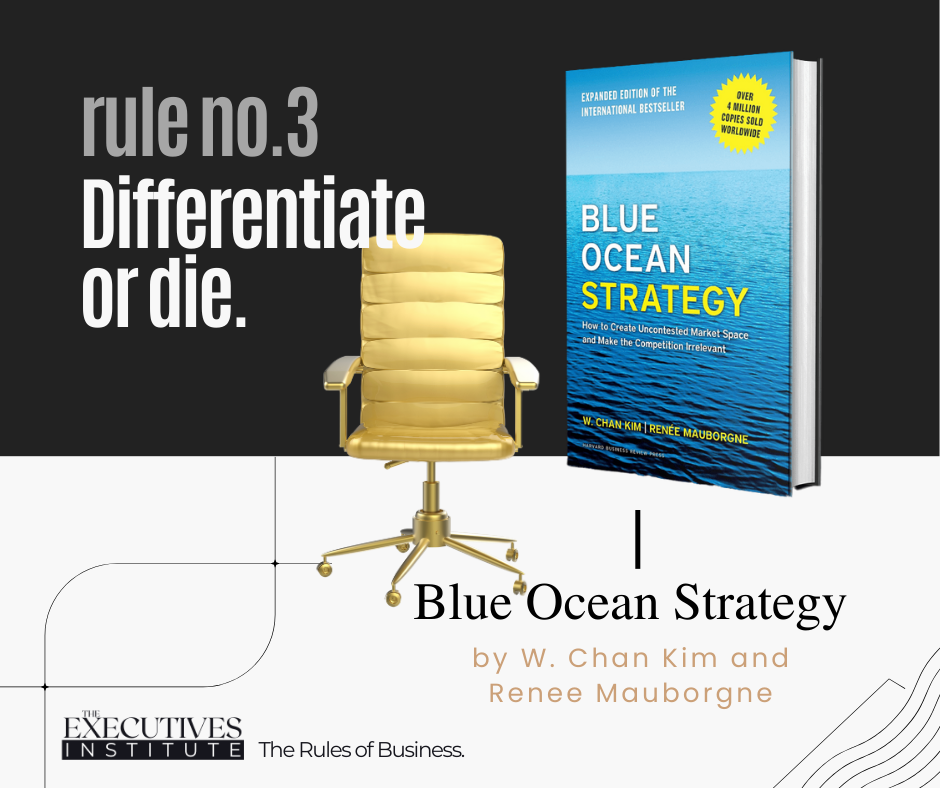
WEEK 14 RECOMMENDED READING: Blue Ocean Strategy by W. Chan Kim & Renée Mauborgne
“The only way to beat the competition is to stop trying to beat the competition.”
– W. Chan Kim, Blue Ocean Strategy
WEEK 15
Rule No. 4: Play the long game.
Why: Because, sustainable advantage requires patience.
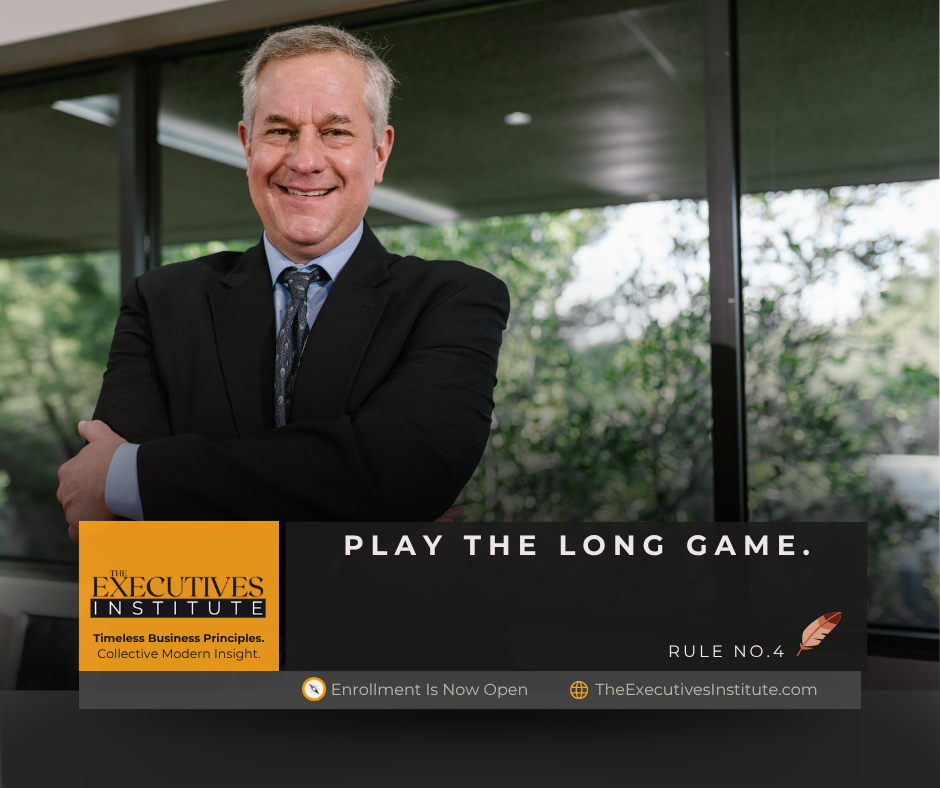
Rule No. 4 SUMMARY ![]()
Success in business isn’t about winning — it’s about enduring. Prioritize long-term vision, trust, and adaptability over short-term gains. Great companies focus on building something that lasts, not just something that performs today.
Ask Yourself: Am I building for today’s approval — or tomorrow’s endurance?
WEEK 15 Action Step: Identify one current decision or project where short-term results are driving your choices. Reframe it with a 5–10 year perspective: What action today would strengthen the organization’s future, even if it costs more now? Commit to taking that long-term step this week.
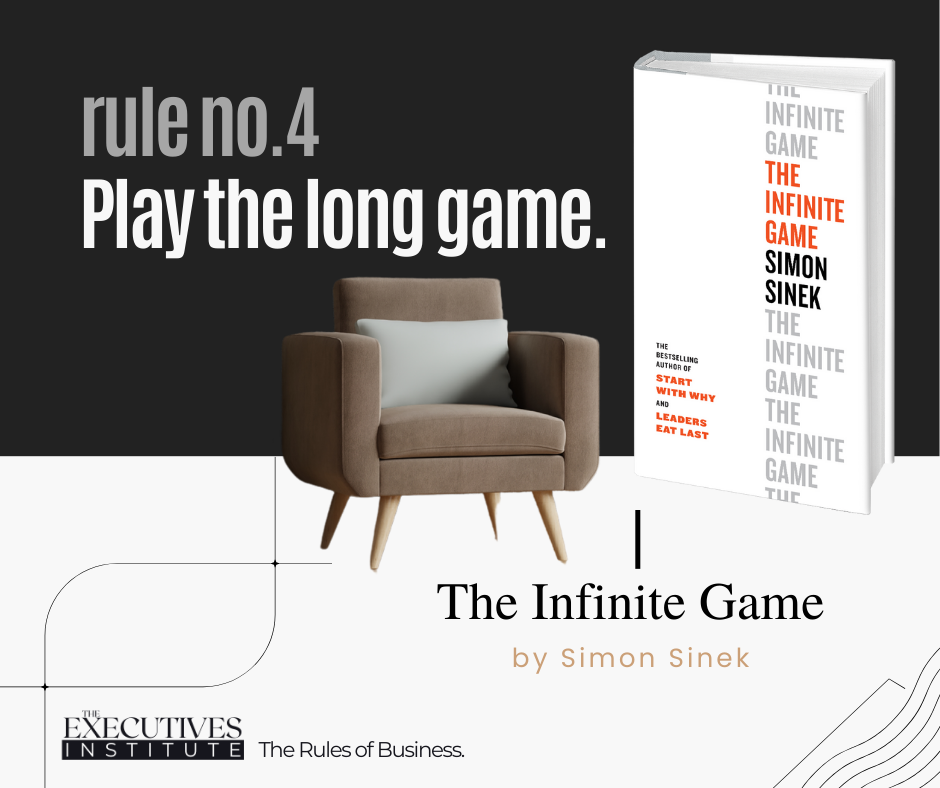
WEEK 15 RECOMMENDED READING: The Infinite Game by Simon Sinek
“Infinite-minded leaders understand that ‘best’ is not a permanent state. Instead, they strive to be better.”
— Simon Sinek, The Infinite Game
WEEK 16
Rule No. 5: Make fewer, bolder moves.
Why: Because, focused strategy beats scattershot tactics.

Rule No. 5 SUMMARY ![]()
Focus beats frenzy. Spread too thin, you risk mediocrity everywhere. Bold, deliberate moves—rooted in strategy, not reaction—create real advantage. Commit to fewer initiatives, but back them fully. Win where it matters.
Ask Yourself: If we stopped everything else and went all-in on this one move, would it truly change the trajectory of our business?
WEEK 16 Action Step: Review your top five current initiatives. Cut the list to the one or two that, if successful, would make the biggest impact. Redirect time, budget, and people to those—and pause or kill the rest.
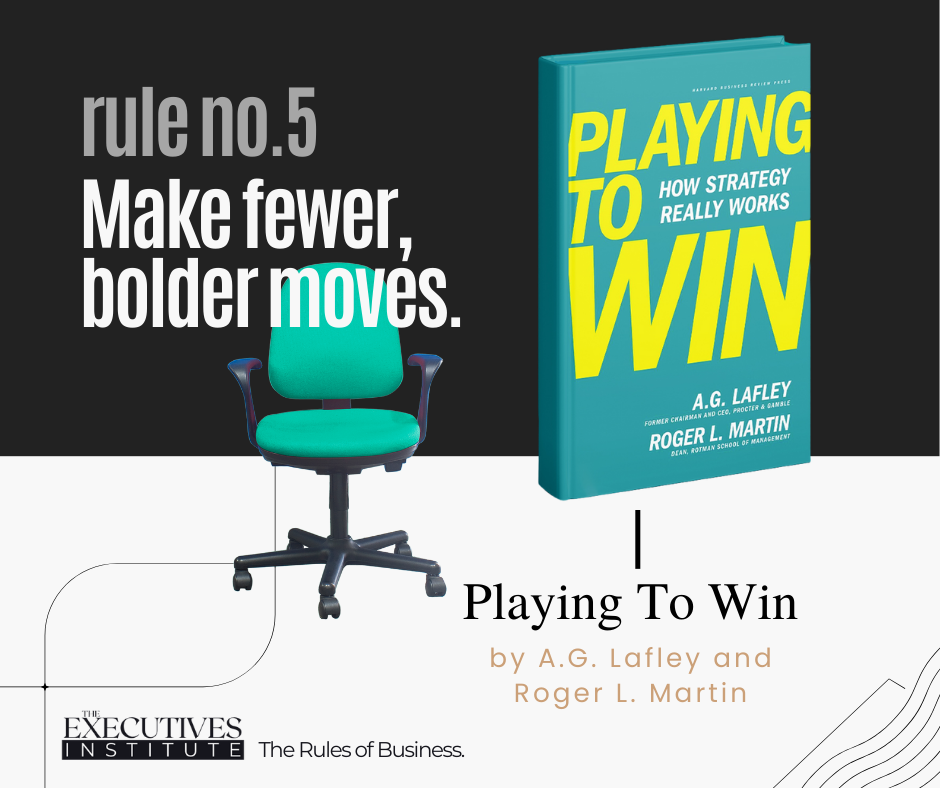
WEEK 16 RECOMMENDED READING: Playing to Win by A.G. Lafley & Roger Martin
“Strategy…It requires making explicit choices—to do some things and not others—and building a business around those choices.”
— A.G. Lafley & Roger L. Martin, Playing to Win
WEEK 17
Rule No. 25: Ask better questions.
Why: Because, curiosity drives innovation.

Rule No. 25 SUMMARY![]()
The quality of your outcomes is directly tied to the quality of your questions. Leaders who ask better questions don’t just get better answers—they uncover blind spots, surface assumptions, and spark clearer thinking in themselves and others.
Ask Yourself: Am I leading my team toward better answers—or am I limiting them by asking small, safe questions?
WEEK 17 Action Step: In your next leadership meeting, replace one agenda item with a single, open-ended question. Don’t answer it immediately—let the group wrestle with it. Measure the quality of the conversation, not the speed of the conclusion.
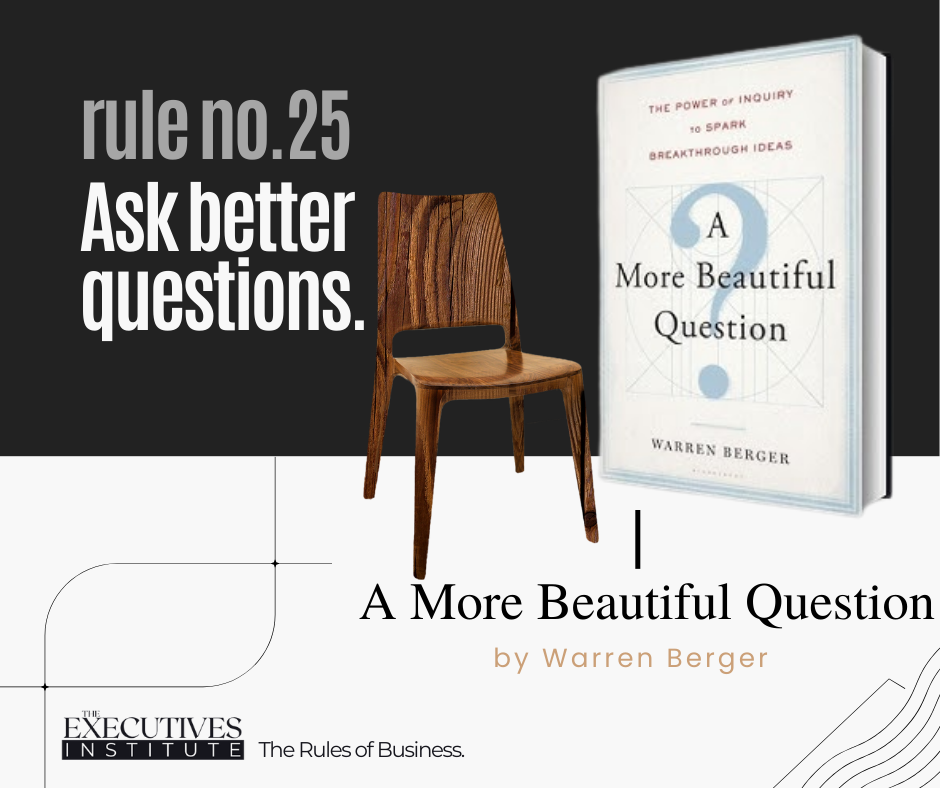
WEEK 17 RECOMMENDED READING: A More Beautiful Question by Warren Berger
“The ability to ask beautiful questions — profound, ambitious questions that can shift the way we perceive or think about something — is one of the most powerful forces for change.”
– Warren Berger, A More Beautiful Question
WEEK 18
Rule No. 26: Define it. Measure it. Achieve it.
Why: Because, what gets measured gets done.

Rule No 26 SUMMARY ![]()
Vague goals don’t move organizations forward—clear objectives do. This rule reminds executives that without defining what success looks like and establishing the right metrics, progress is merely hope in disguise. Define the outcome. Tie it to measurable key results. Then hold the line until it’s achieved.
Ask Yourself: Do I know—today—whether we’re winning or losing on our top priorities? Or am I relying on gut feel instead of measurable progress?
WEEK 18 Action Step: This week, pick one major goal your team is working on. Rewrite it into a single, clear objective with no more than 3 measurable key results. Share it with your team and confirm everyone understands both the objective and how progress will be tracked.
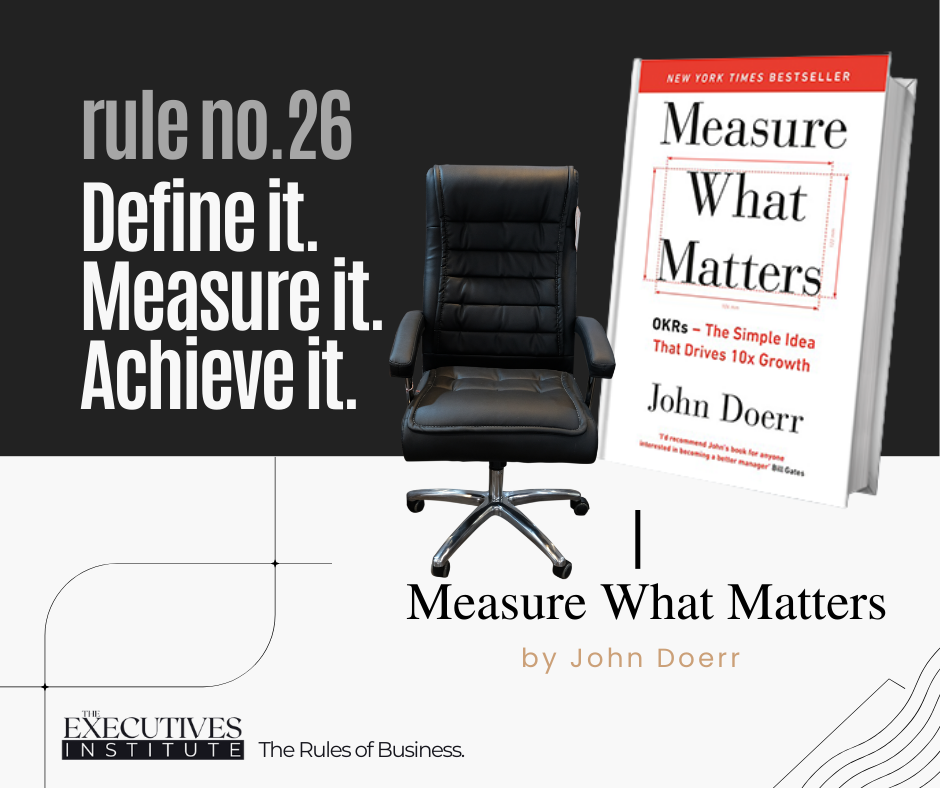
WEEK 18 RECOMMENDED READING: Measure What Matters by John Doerr
“Ideas are easy. Execution is everything. And it takes a team to win.”
— John Doerr, Measure What Matters
You’ve just done what many leaders avoid—made strategy real.
Congratulations. You didn’t just talk about direction—you chose it. You got clear on what matters most, committed to the long game, and built the muscle to ask sharper questions and measure what moves the needle. That’s strategy in the real world: clear, disciplined, and alive in the day-to-day.
But clarity without execution? That’s just a well-drawn map collecting dust.
In Chapter 5: Execution Beats Ideas, we shift from planning to doing. Because in business, the scoreboard doesn’t care how smart your strategy is—it cares what you shipped, solved, and finished. Get ready to break through inertia, cut the noise, and build real momentum through focused, disciplined action. VISIT CHAPTER 5
